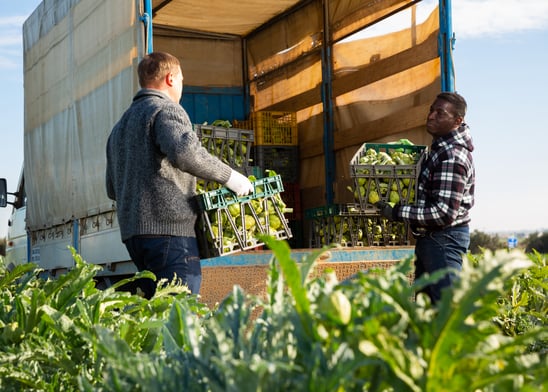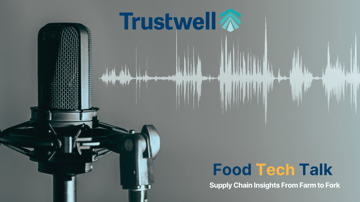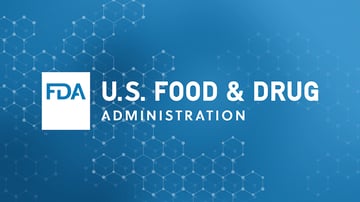The Food and Drug Administration (FDA) has major plans in store to improve food safety and supply chain transparency. To wrap up 2022, the FDA held a webinar covering the essential aspects of the Food Safety Modernization Act (FSMA) Final Rule. They provided detailed information on the legislation, plus some tools and tips to help businesses prepare for the change leading up to the 2026 compliance date.
The webinar was very comprehensive, so to help you understand the fundamental aspects, we’ve compiled our notes into this blog. But don’t worry if you missed the webinar – the entire recap is available online.
Before we dive in, some terms to know…
A major aspect of FSMA is setting a common language for the supply chain. Here are some of the terms and acronyms you’ll see in this blog:
- CTE: Critical Tracking Events, which can include harvesting, cooling, initial packing, receiving (by land-based vessel or other methods), shipping, and transforming items on the FTL.
- FSMA 204: Food Safety Modernization Act; Section 204
- FTL: Food Traceability List
- KDE: Key Data Elements, which will depend on the CTE being performed and will require KDE records for each CTE linked to a traceability lot.
- RAC: Raw Agricultural Commodity, most commonly referring to fresh fruits or vegetables
- RFE: Retail food establishment
- TLC: Traceability Lot Code (Also common: TLC Source)
For a review of the major changes between the proposed and final rule, see our blog: The Roadmap to Enhanced Traceability Recordkeeping. 
Key Elements of FSMA 204
The FSMA Final Rule is just the beginning of a comprehensive initiative for the FDA to achieve complete end-to-end traceability along the food supply chain. FSMA 204 is a critical first step to pave the way for traceability and is the bridge to the New Era of Smarter Food Safety, setting the stage for the food industry to adopt more digital traceability systems.
Although the rule does not require electronic recordkeeping, the FDA noted that they hope many companies will adopt digital systems, which will speed-up the process and ultimately bend the curve of foodborne illness. As the FDA reminded the webinar audience: “we are all working for the same boss – the American consumer.”
Companies who are covered by the rule, those who handle food on the Food Traceability List, will have until January 20, 2026, to comply. Specifically, any business (both foreign and domestic) that packs, processes, or holds foods on the FTL and that will be sold to American consumers will need to track certain activities and data elements along the way. These activities, known as Critical Tracking Events will help the FDA in the event of a foodborne illness outbreak or food recall. If an outbreak occurs, the FDA outlines in FSMA their expectations for businesses that are impacted.
The primary focus of FSMA is to protect public health. However, the FDA is also anticipating this regulation will diminish food waste, improve supply chain and inventory management, and will expedite recall processes and save both businesses and the FDA time and money in the process.
Where should businesses get started?
FSMA 204 brings with it some changes that will take time to implement. The best thing you can do to prepare is to start as soon as possible. The FDA provided information on where to start:
- Review the impact: There are some exemptions for businesses that handle foods on the FTL, and the FDA has provided an Exemptions Tool to determine if your business qualifies. Review the FSMA final ruling, the FTL, and Exemption Tool to determine how your business will be impacted.
- Speak with partners: Begin the conversation with your supply chain partners. By speaking with them directly, you can develop an understanding of their plans and what practices are already in place along your shared supply chains.
- Invest in capital and resources: The FDA believes training personnel and adopting new technology may require a one-time or recurring costs to businesses. While the efforts of FSMA are meant to decrease costs over time, your business may need to make key investments as part of your traceability program.
- Begin collecting records and tracking data: The FDA suggests making the transition to digital records as soon as possible.
Don’t know where to start? Let us help! At Trustwell, we’re also offering a free FSMA consultation to help you get started. You can request your consult on our website.
Technology and Tools to Aid in FSMA Compliance
Education and technical assistance are essential to the success of implementing FSMA compliance. On the FDA’s website, you can find their exemption tool, a clickable CTE and KDE pdf, short supply chain traceability example videos for produce, seafood, and cheese, and a list of FSMA FAQs.
Building a Traceability Plan
Your traceability plan must include the procedures used to capture and maintain records as described in FSMA 204. Key components of a Traceability Plan include:
- Procedures to maintain the records – including format and location.
- Procedures to identify foods on the Food Traceability List.
- How you assign traceability lot codes (if applicable).
- Point of contact for your traceability plan and records (knowledgeable contact who can speak to the FDA about your plan and how it is executed).
- If you grow or raise food on the FTL (other than eggs), a farm map showing the areas in which you grow or raise such foods.
- If data is being collected by a third party, include details of that agreement.
Records Requirements and Technology to Help
The FDA has a few key requirements for recordkeeping:
- Records should be legible original paper, electronic (spreadsheet or electronic link), or true copies and stored to prevent deterioration or loss.
- Records must be kept for 2 years.
- Records should be available to the FDA upon request within 24 hours (or a reasonable time if FDA agrees) of the request.
- Records can be stored offsite, in a centralized location (for multi-location businesses), or by another entity, if they can be delivered to the FDA within the designated time frame.
- Businesses should also provide any information that will help the FDA interpret records, which may include translations if records are in another language.
While business can maintain records in various formats, the FDA does urge businesses to adopt electronic recordkeeping. This will help the FDA streamline interpreting, sorting, and determining the source of potential outbreaks or recalls.
Industry leaders have been using traceability solutions to provide much needed data capture, data validation, and help monitor product and location compliance. FoodLogiQ Traceability allows trading partners to capture, maintain, and access CTE data. Our cloud-based platform provides various data-loading methods for you and your trading partners to capture CTE data, including mobile app, online forms, EDI, API, and more. Our validation engine and robust reporting will give you the confidence you need to ensure you’re collecting complete CTE data from every location, for every FTL item.
Where Can You Learn More?
How will FSMA 204 affect your business? Our traceability experts are ready to review your supply chain with our Free FSMA Consult. Sign up today and create your roadmap to FSMA compliance.
Other posts you might be interested in
View All Posts
Trustwell News
6 min read
| September 28, 2023
What’s Happening on the Hill: Food Labeling, FSMA, and More at reCONNECT 2023
Read More
Food Industry
6 min read
| August 28, 2024
Kroger’s Approach to FSMA 204 with Catherine Cosby
Read More
8 min read
| November 9, 2021

